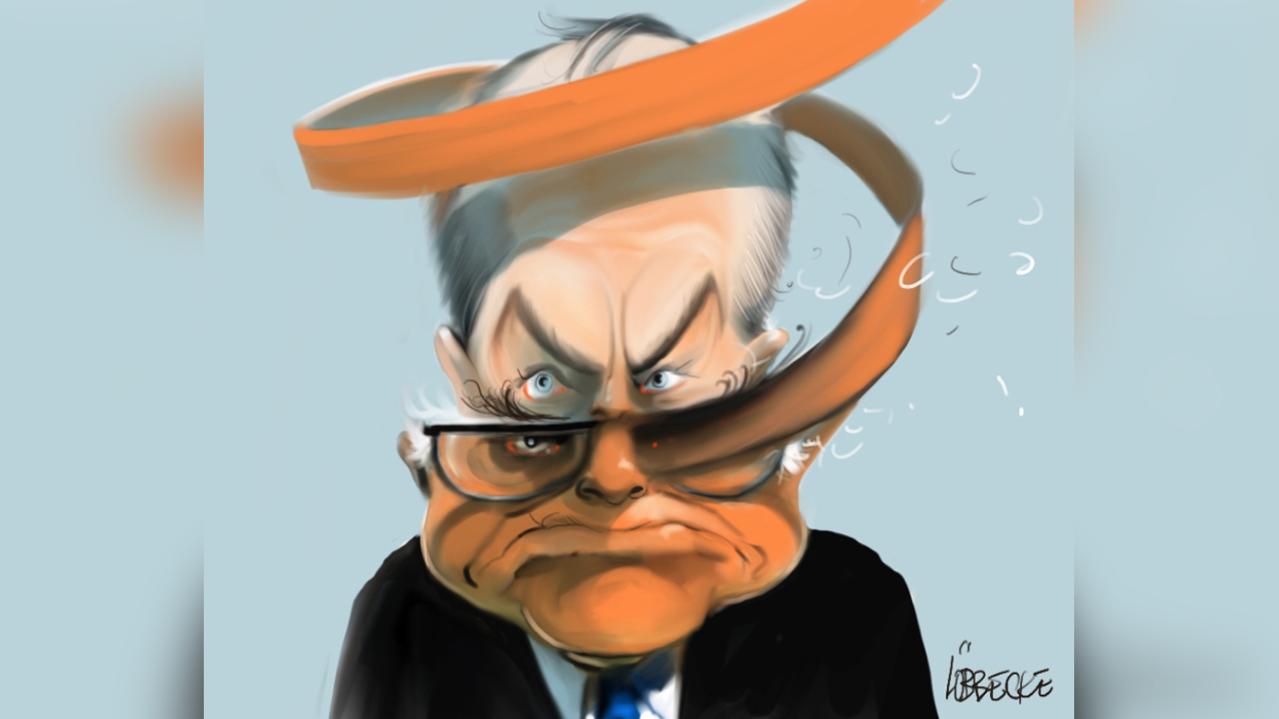Budget 2016: Focus on getting people into work makes sense
This is a budget of two halves — Malcolm Turnbull’s half and Scott Morrison’s half.
Turnbull, with his significant business background, has delivered company tax cuts which over time will cover all businesses, not just small businesses. And the rate the tax is being reduced to is 25 per cent in a decade’s time: The same rate Bill Shorten nominated as an aspirational goal both parties should work together to achieve in his budget in reply speech last year.
Just watch Shorten weasel his way out of the false hope he gave businesses 12 months ago now that Morrison has laid out a plan.
The company tax cuts are a sign of maturity, doing what works to lift growth. A serious attempt at transitioning our economy towards a more innovative future must include a plan for lowering company taxes. Not because voters like it: they don’t. Because in a globalised economy, countries can’t hide. It is unsustainable for Australia to leave company tax rates where they are over the next decade when they are already high by OECD standards, and super high by regional standards.
We need to be an attractive destination for investment.
The second half of the budget focuses on welfare measures designed to address unemployment, particularly intergenerational unemployment. This is Morrison’s half, no doubt ideas from the cutting room floor from his time as social services minister. He is the first social services minister to go on to become treasurer. And Morrison has been ably assisted in putting this year’s budget together by a former state treasurer, Christian Porter, who is the new Social Services Minister.
I haven’t seen such a focus on programs for getting people into work in a budget since John Howard introduced work for the dole.
With the baby boomers retiring and our economy more income tax dependent than it should be, courtesy of the consumption tax debate being put in the too-hard basket, ensuring more of the population are employable is a fiscal imperative as well as a social one.
We now have a real contest as we count down towards the election: The philosophical dividing lines between Labor and the Coalition have well and truly emerged.
We have a government which is focused on boosting economic growth by targeting small businesses for further tax relief, with the goal of expanding said relief as the budget bottom line improves (translation: when they can afford to). The opposition is unlikely, despite its past rhetoric, to back these initiatives. Expect Shorten to use his reply speech to claim assistance for low and middle-income earners needs to come first.
Such populism ignores the benefit everyone gets when businesses prosper and the economy gets a shot in the arm. It’s only after that happens that governments can substantially offer tax relief to the rest of us, or grow the long arm of the state, unless doing so is funded by more taxes elsewhere or more debt. Labor is unashamedly admitting some taxes need to go up to cover what it regards as adequate service provision. It says the government is underfunding schools and hospitals. The government says it is spending what the nation can afford (well not yet, we are in substantial deficit, but it hopes to rectify that in the budget’s out years) and has modestly lifted school and hospital funding since the 2014 budget. The Coalition argument is that to boost spending further requires policies that will help boost economic growth first.
Cue scare campaign on negative gearing and capital gains taxes increasing under Labor.
To win this argument, the government is going to have to argue its case better than recent history has taught us it’s capable of. The advocacy skills of all sides of politics have been in a decade-long slump. The Coalition’s message is more complicated to tease out than Labor’s.
There are reasons to worry about the albeit modest pathway back to surplus outlined in this budget, not that the out years of the budget have projected a surplus. We will still have a deficit of nearly $6 billion in 2019-20 if everything in the budget goes right. Growth is projected to be 2.5 per cent this financial year and next, modest enough to be credible. Although yesterday’s Reserve Bank decision to lower interest rates to a historic low suggests the board are bears, not bulls when it comes to the economic horizon. Which is why predictions of 3 per cent growth in 2017/18 and beyond look too optimistic now.
And the budget still has to withstand an election campaign. It’s hard to believe that the government won’t give in to temptation and splash cash if the polls stay tight.
In his speech the Treasurer promised to cut “unnecessary waste”. Is any waste necessary?
Overall, Morrison can be happy with what he’s bowled up in his first budget. It is not the reforming budget the nation needs, but it at least starts the process. It is not an election-winning budget either, but it won’t lose Turnbull the election.



To join the conversation, please log in. Don't have an account? Register
Join the conversation, you are commenting as Logout